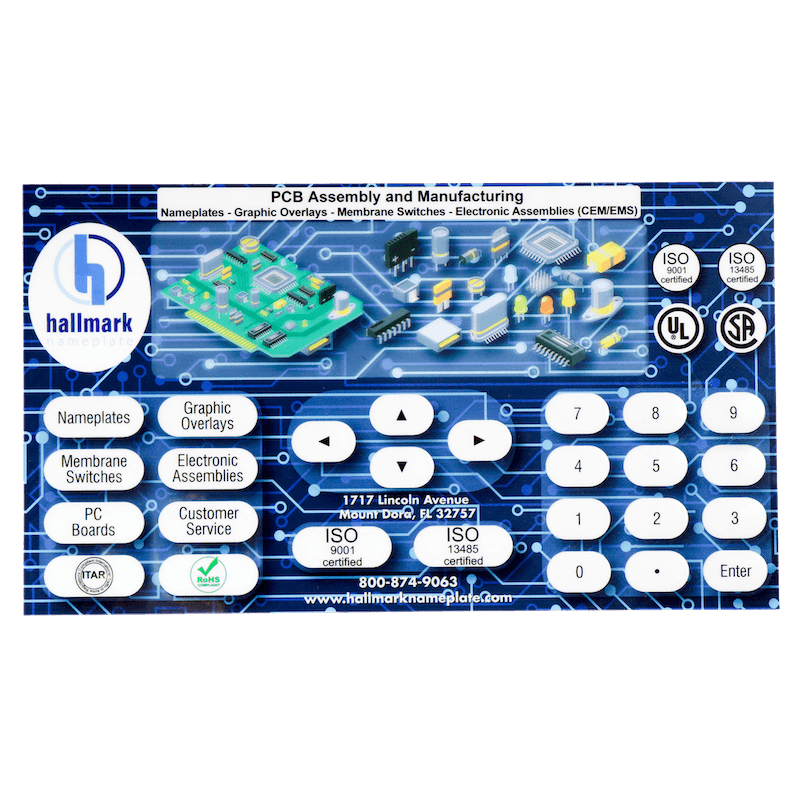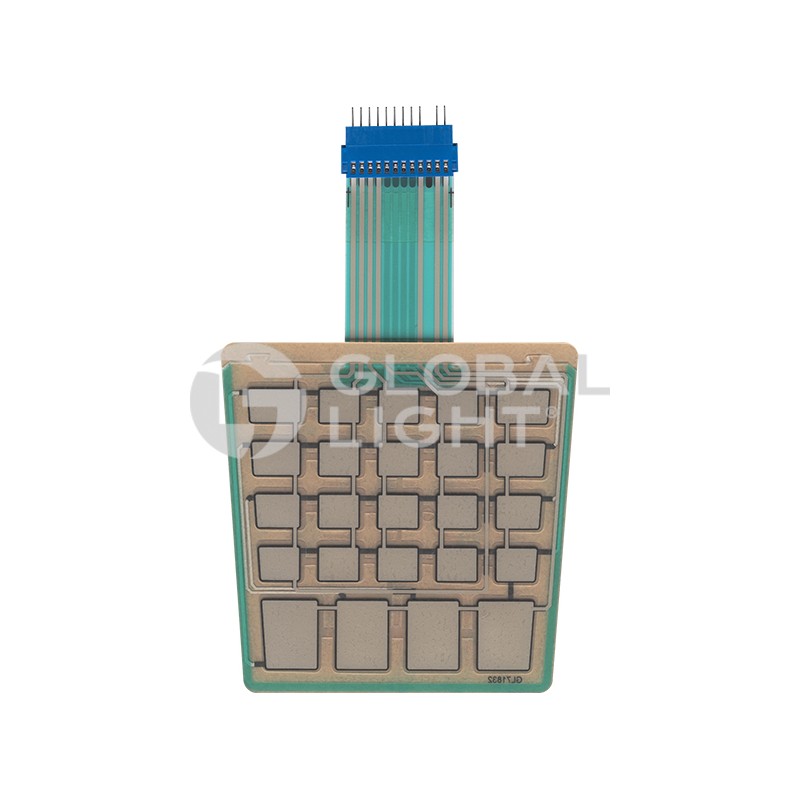Recognizing Membrane Switches Over: The Key to Sturdy and Trustworthy Controls

What Are Membrane Layer Buttons?
Membrane layer buttons are a sophisticated service in the realm of interface modern technology, incorporating functionality and design perfectly. These gadgets work as a user interface in between customers and digital systems, incorporating numerous components into a compact format. Generally built from adaptable, thin layers of materials, membrane layer buttons are created to reply to touch, enabling customers to connect with machinery and electronic devices successfully.
The main aspects of a membrane switch include a printed circuit layer, visuals overlay, and a spacer layer that protects against unplanned activation. The visuals overlay can be personalized to show brand identity or user choices, improving aesthetics while ensuring use. Membrane layer buttons are typically utilized in various applications, consisting of clinical gadgets, consumer electronic devices, and commercial equipment, owing to their resilience and resistance to environmental variables such as dampness and dust.
Among the essential advantages of membrane layer switches is their capacity to hold up against deterioration, making them perfect for high-traffic environments. In addition, they are lightweight and call for very little space, permitting ingenious designs in item development. On the whole, membrane switches stand for a efficient and sensible option for modern-day electronic user interfaces, marrying modern technology with user-centric style concepts.
How Membrane Layer Switches Job
The operation of membrane layer switches rest on a straightforward yet efficient device that equates customer input into digital signals. These buttons contain several layers, generally consisting of a visuals overlay, a spacer layer, and a circuit layer. When an individual presses the button, the top layer warps, permitting a conductive element in the circuit layer to reach an equivalent conductive pad on the underside of the visuals overlay. This contact shuts the circuit and sends out a digital signal to the gadget, showing that the switch has been turned on.
The layout of membrane layer switches can vary, but they usually incorporate domes or tactile elements to offer comments to the individual, boosting the total experience - membrane switch. The products made use of in membrane layer buttons, such as polyester or polycarbonate, contribute to their sturdiness and resistance to ecological aspects, including dampness and dirt. In addition, the published circuits are typically encapsulated, which protects them from wear and tear over time.
Benefits of Membrane Buttons

Additionally, membrane switches are understood for their toughness. Created from durable products, they are immune to dirt, dampness, and physical wear, which significantly extends their lifespan compared to conventional mechanical switches. This longevity makes them especially appropriate for high-traffic environments and applications requiring longevity.
Another considerable advantage is the convenience of cleansing and maintenance. The smooth surface of membrane layer changes lessens dirt build-up and is commonly resistant to spills, making them get more excellent for setups that need regular sanitization.
Furthermore, membrane switches supply a structured profile, resulting in a thinner design that can be integrated right into different gadgets without adding mass. This attribute not only enhances the aesthetic allure however likewise adds to an extra ergonomic item style.
Applications of Membrane Buttons
User-friendly and functional, membrane switches locate applications across a wide variety of markets, including clinical devices, customer electronics, and commercial devices. In the medical area, these switches are address indispensable to gadgets such as diagnostic tools, client surveillance systems, and infusion pumps, where reliability and simplicity of cleaning are essential. Their capability to withstand extreme environments and keep functionality makes them excellent for such applications.

In customer electronics, membrane layer click to find out more buttons are used in items like microwaves, cleaning machines, and push-button controls - membrane switch. Their streamlined design permits instinctive user interfaces, improving the total user experience while supplying durability and resistance to damage
Commercial equipment likewise takes advantage of membrane layer switches, especially in control panels for equipment and automation systems. These buttons offer protection against dirt and wetness, ensuring consistent performance in difficult atmospheres. In addition, their customizable features enable makers to customize them to details functional demands, enhancing efficiency and functionality.
Selecting the Right Membrane Layer Change
When choosing a membrane switch, it is vital to think about different elements that influence performance and viability for details applications. The main factors to consider include environmental conditions, responsive responses, toughness, and layout requirements.
First, analyze the operating atmosphere; buttons subjected to moisture, chemicals, or extreme temperature levels need certain products to guarantee longevity and performance. Next, evaluate the demand for tactile feedback. Relying on individual interaction, some applications might take advantage of a tactile feedback to verify activation, while others may favor a non-tactile style for aesthetic factors.
Toughness is another critical aspect; membrane buttons ought to be designed to hold up against regular use, influences, and abrasion. Guarantee the picked switch can endure the anticipated lifecycle, particularly in high-usage situations.
Verdict
In verdict, membrane changes offer as necessary parts in the design of trusted and durable control systems across numerous sectors. The flexibility of membrane layer switches over allows for tailored services that fulfill details operational requirements, strengthening their value in modern technology.
Membrane changes stand for an essential aspect of contemporary user interface layout, mixing functionality with resilience in various applications.Membrane switches are an advanced option in the world of individual interface modern technology, incorporating capability and layout seamlessly. Generally built from versatile, thin layers of materials, membrane switches are designed to respond to touch, enabling users to interact with equipment and digital tools properly.
The layout of membrane layer switches can vary, but they frequently incorporate domes or tactile elements to give responses to the customer, improving the general experience.In final thought, membrane switches offer as necessary elements in the style of resilient and dependable control systems throughout numerous markets.